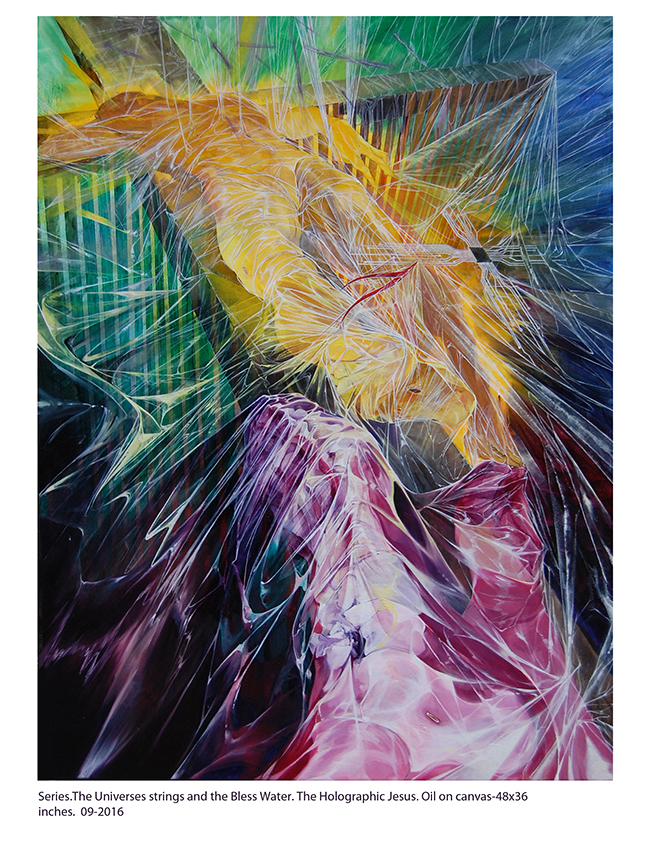Guillermo Lorente Perez is a Cuban-American painter with a Bachelor’s degree in Drawing, Painting, and Composition. His work delves into the realms of religion, technology, and the human condition, often challenging our perceptions of reality. One of his notable pieces, “The Holographic Jesus,” is part of the series “The Universe’s Strings and the Bless Water,” which questions the reality we live in and the religious figures that shape our moral lives.

In “The Holographic Jesus,” Perez explores the concept of Jesus as a half-human and the human race as a product of implanted DNA manipulation. The painting is a commentary on the idea that the reality and world around us may be artificial or computer-generated, suggesting that we might be living inside a game. The artwork features two Jesus figures, one that comes from within oneself and another that is projected outward. The two figures meet at the feet, symbolizing the intersection of the internal and external worlds.
Perez’s use of materials is also noteworthy. In “The Holographic Jesus,” everything in the painting is wrapped in nylon material and controlled by microchips, emphasizing the theme of control and manipulation. This choice of materials adds a layer of complexity to the artwork, inviting viewers to contemplate the relationship between technology and spirituality.
The artist’s background and upbringing are integral to his work. Born in Cuba, raised in Sweden, and now living in the United States, Perez’s multicultural experiences have influenced his artistic perspective. He draws inspiration from a diverse range of sources, including Cuban folklore, Swedish design, and American pop culture.
In addition to his visual art, Perez is also a musician and composer. He often incorporates music into his exhibitions, creating immersive experiences that engage all the senses. His interdisciplinary approach to art reflects his belief that creativity knows no boundaries.
Overall, Guillermo Lorente Perez’s work challenges viewers to question the nature of reality and the role of religion and technology in shaping our lives. Through his thought-provoking paintings, Perez invites us to explore the boundaries of our existence and consider the possibility that our reality may be more complex than we perceive.

